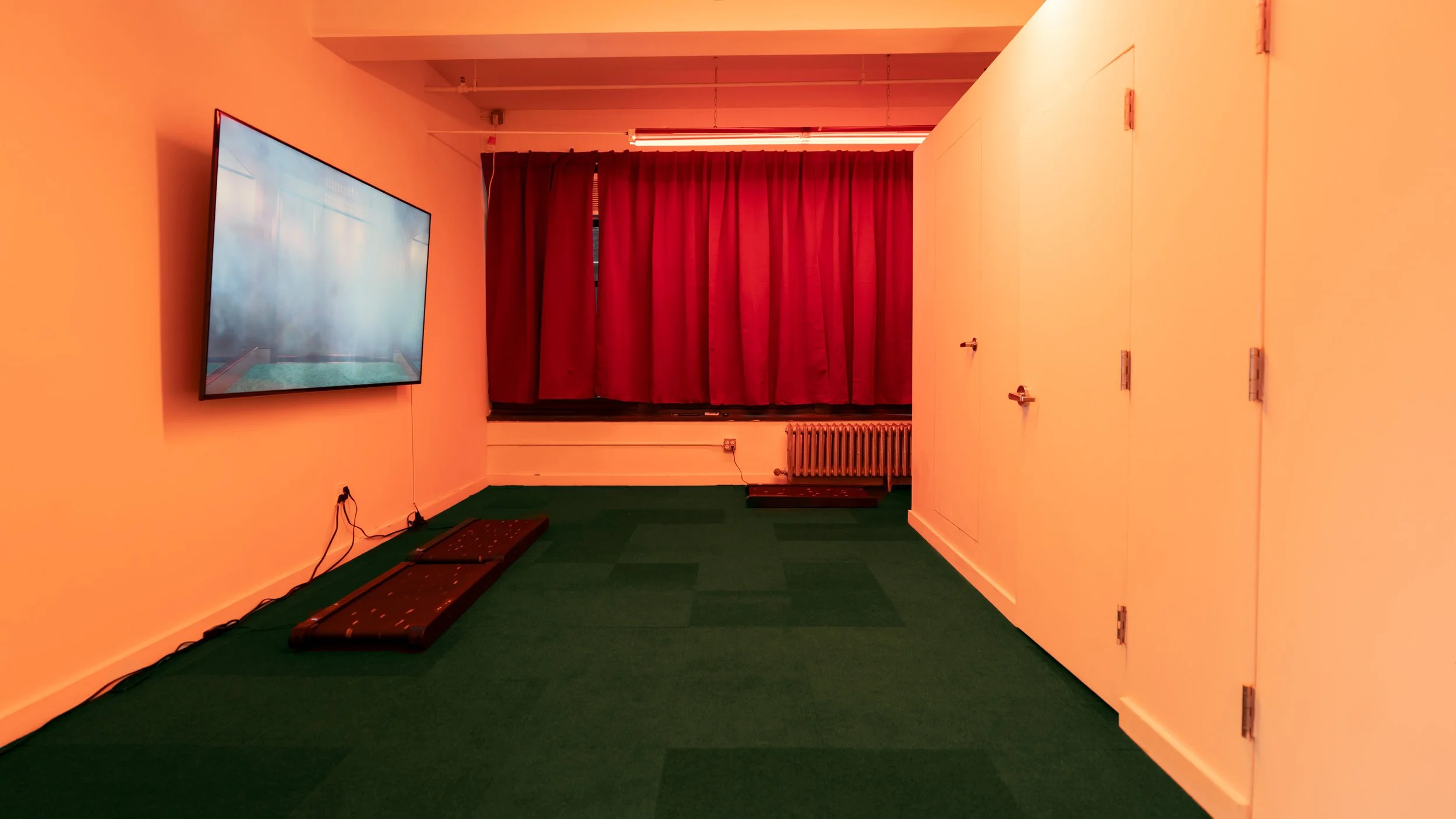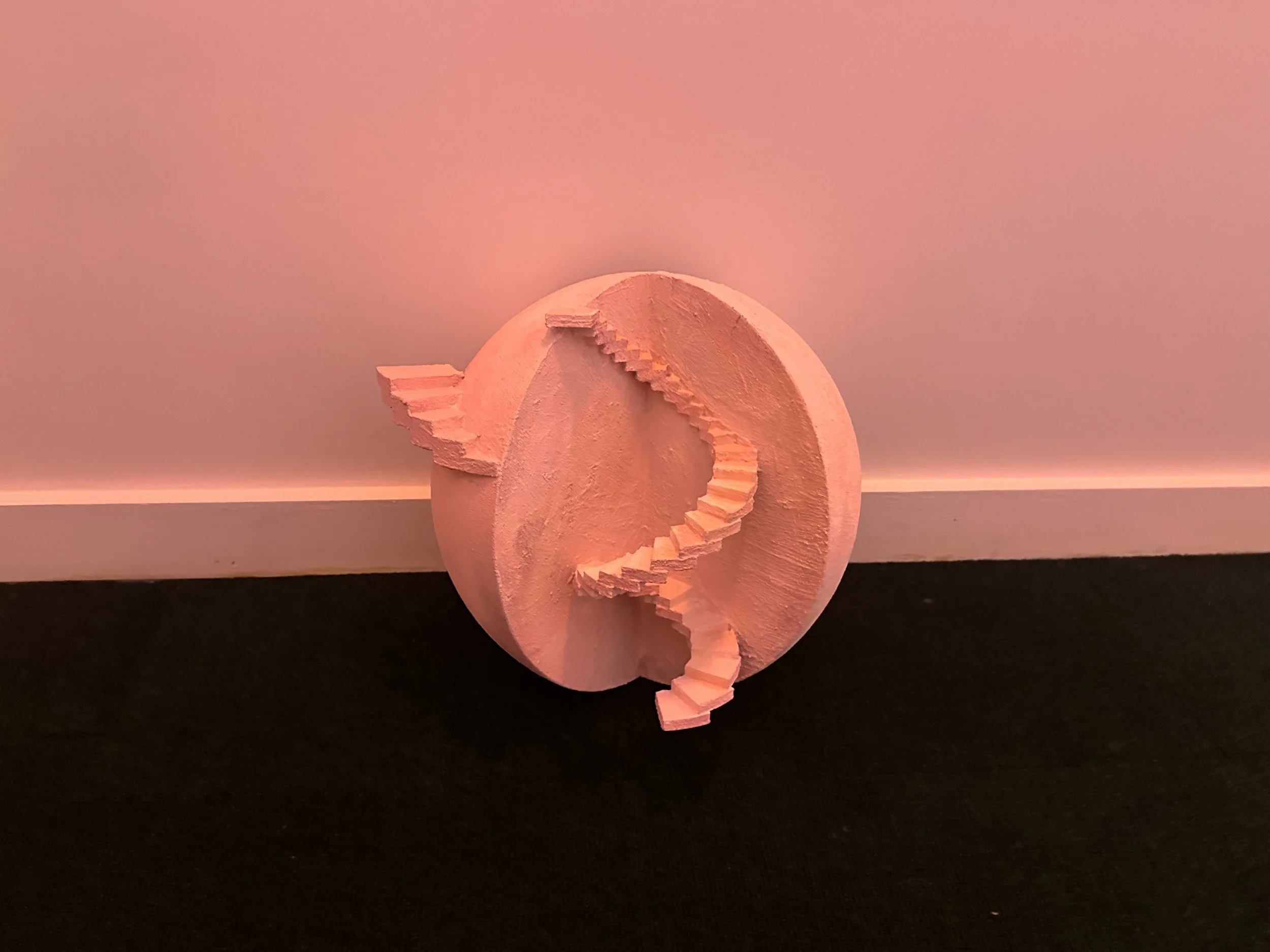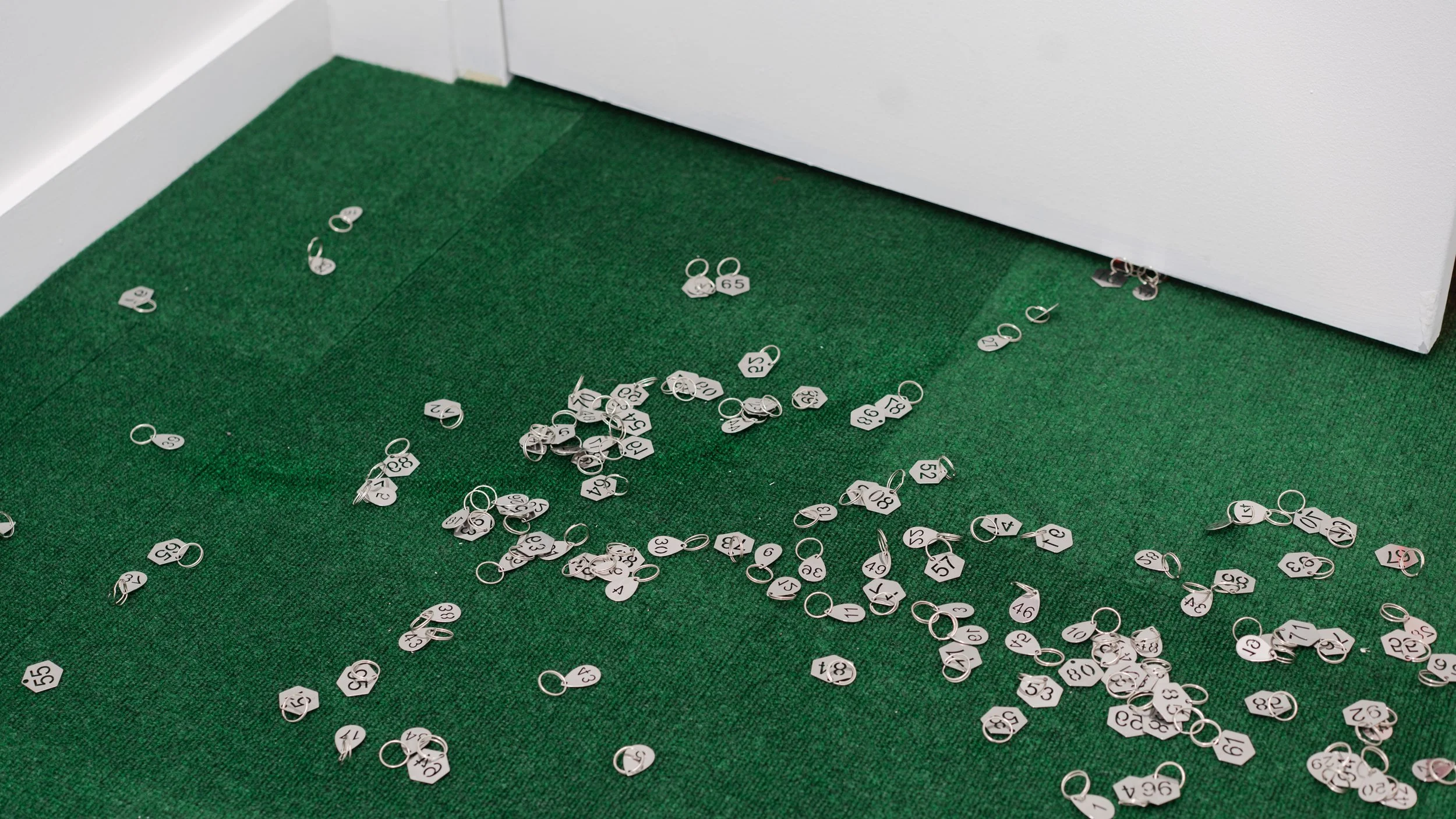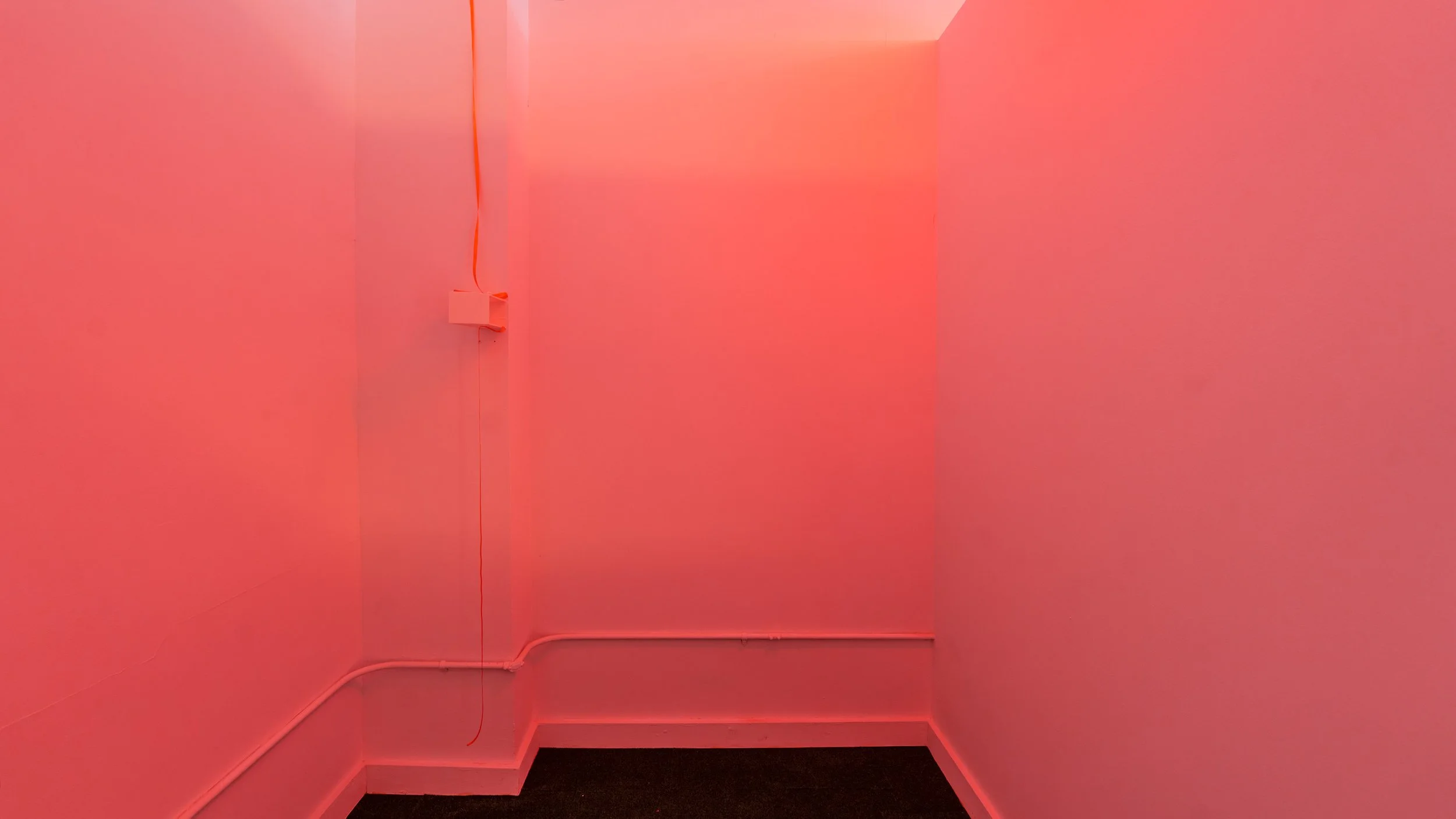Amiko Li’s Ouroboros of Motion and Stillness
In How to Do Nothing: Resisting the Attention Economy, author Jenny Odell frames “doing nothing” as an act of resistance, urging readers to relinquish the need to conform to the capitalist view of productivity, to ultimately “wrest our focus from the attention economy and replant it in the public, physical realm.” Our time is restless. They tell us that time is capital. Don’t dilly-dally, they tell us. Everything hinges on immediacy’s promise of instant gratification.
Amiko Li’s solo exhibition Nothing to do here but Wait is organized by the collective Mandarin Express. In a way, the experience begins when one steps into the lobby of the Herald Square mixed-use commercial building: through a gold-accented revolving door, one arrives before a brass-plated elevator of mid-century charm, echoing the computer-rendered elevator in the titular video work. Riding the elevator up, I could not help but think of Colson Whitehead’s elevator in his novel, The Intuitionist: at once a ruthless, mechanized can of vertical transportation and a symbol for social mobility. On the second floor, a corridor of identical doors is painted bright yellow. Names of the small businesses adorned the doors in a prescribed sans-serif typeface. The exhibition greets the viewer with yet another set of doors. The Monty Hall problem rears its head, but what is the prize at hand?
The exhibition centers on Li’s titular video (2025), set before four doors—two of which lead to rooms with another video installation by the artist titled In Anticipation (2025), as well as prints and sculptures that evoke M.C. Escher’s impossible staircases. We are confronted with an ouroboros of progress and regression, running in circles, stuck in a limbo, as though trapped in a malfunctioning elevator, helpless, objected to a blindsided futurity—a poignant sentiment in light of recent budgetary cuts in education, termination of grants, and dwindling opportunities for the arts.
Li describes the titular video as a “minor imagination of the elevator,” opening up to the question of being and survival against normative structures. The work itself speaks to the anxiety of choice, the anticipation of ensuing consequences, and the opportunity costs, all of which may contribute to decision paralysis in our late-stage capitalism, which is exacerbated by Li’s meticulous, immersive site-specific installations. Number tags are peppered at the entryway. Ever-revolving treadmills frame the perimeter of the green carpet-lined main room. There are tiny papercut stars sprinkled on these treadmills, and throughout the course of the exhibition, some grasped onto the convey belt, whereas some fell to the ground.
During a Zoom call, Li told me that he is more interested in a quiet form of expression. Quietness, quite like waiting, necessitates resilience. The artist’s works are gentle—a foil to the looming, ominous elevator. In one of the rooms of the pop-up exhibition space, a 3D-printed sculpture of an elevator on the wall is equipped with orange ribbons as elevator ropes. What replaces the unnerving void of the elevator shaft is open space, illuminated by the warm orange hue of the lights installed on the ceiling, graced by the tenderness of the ribbons. There’s a romantic push and pull between intimacy and the public space of the elevator, between agency and fate.
Waiting, in this case, is not about staying still. In the video work, footage of quotidian moments is interspliced with fantastical found footage as the elevator door opens to random floors of the imaginary building, all of which are reminders of the quiet joy in everyday life. Today, everything is loud. Walking through Herald Square, past the swarms of Macy’s shoppers, one’s attention is constantly demanded by a flux of scents, images, and sounds. This exhibition is an oasis for slowing down, making time: to wade through the smoke and mirrors of choice and to grapple with the fear of choosing, to unlearn, to let go, with courage.
Amiko Li: Nothing to do here but Wait is on view at 147 West 35th St, #211 from September 12 through October 26, 2025.
[1] Jenny Odell, “Introduction: Surviving Usefulness,” in How to Do Nothing (Melville House, 2019), xi-xxi.




